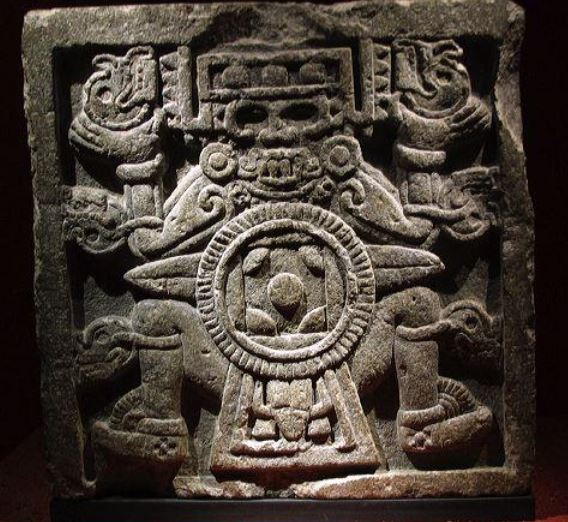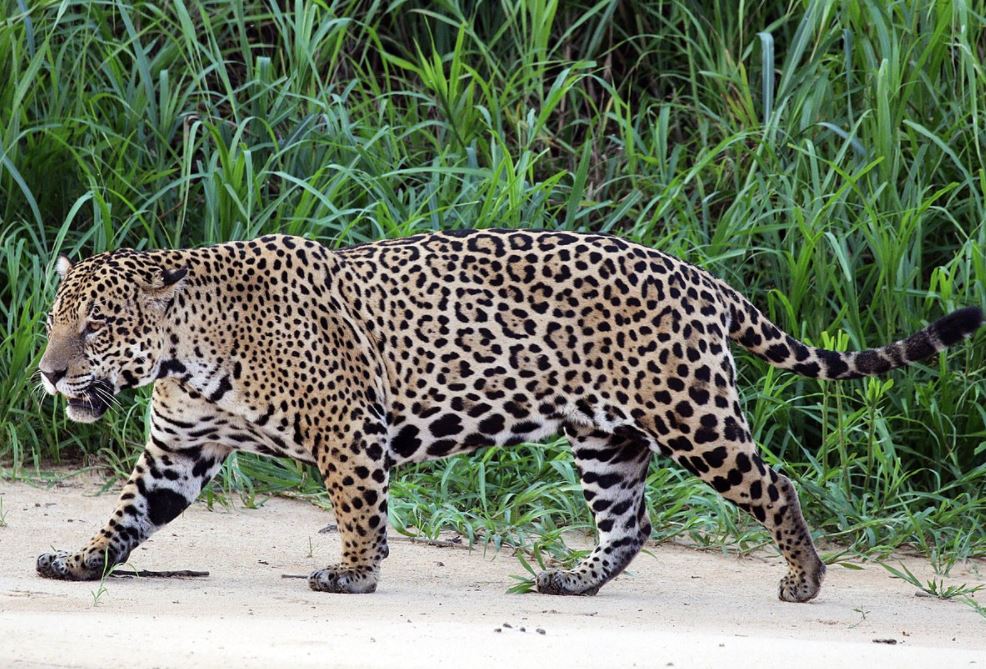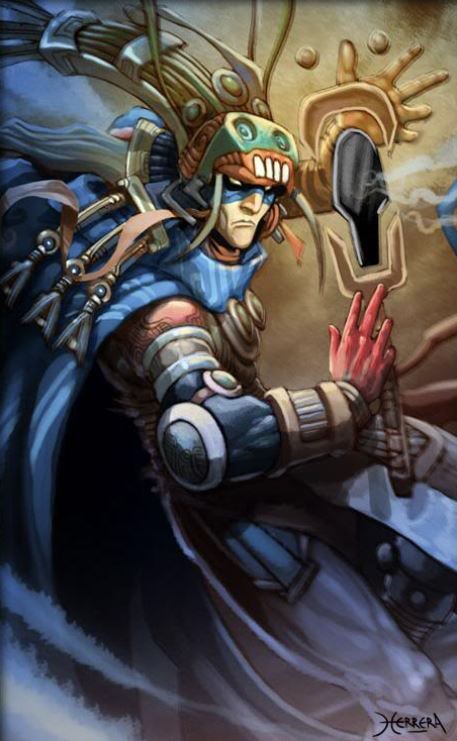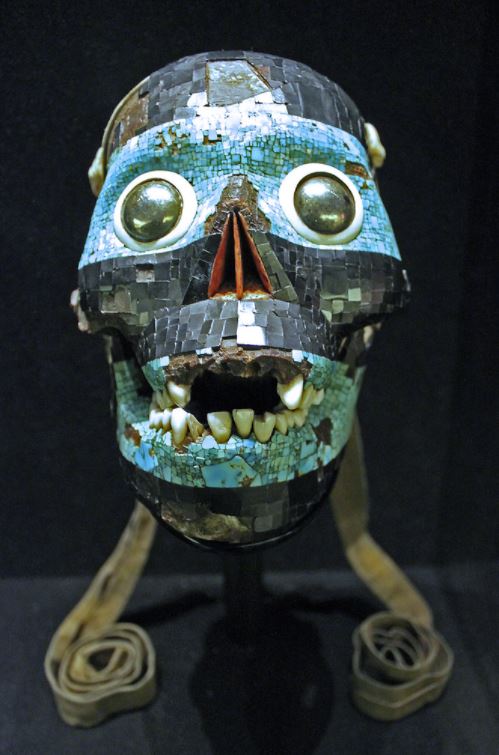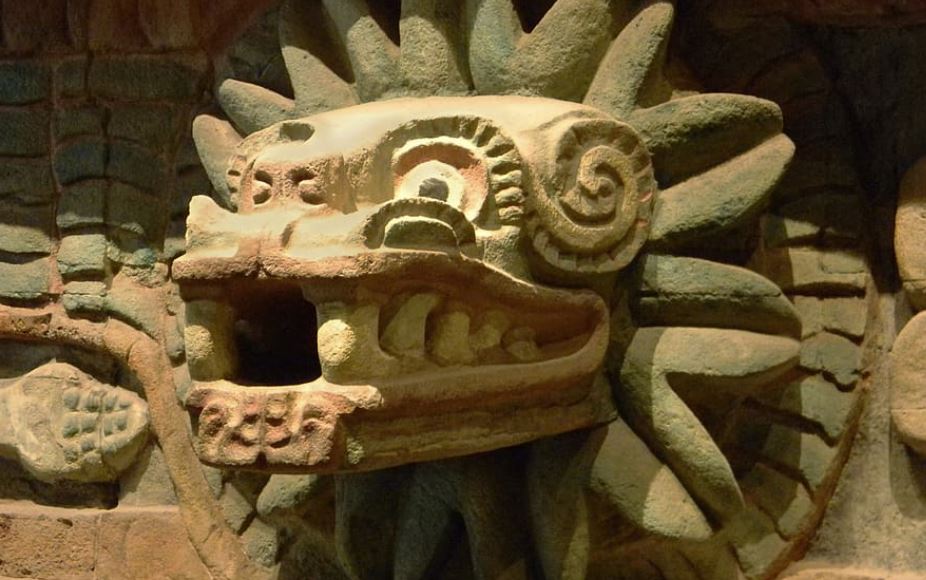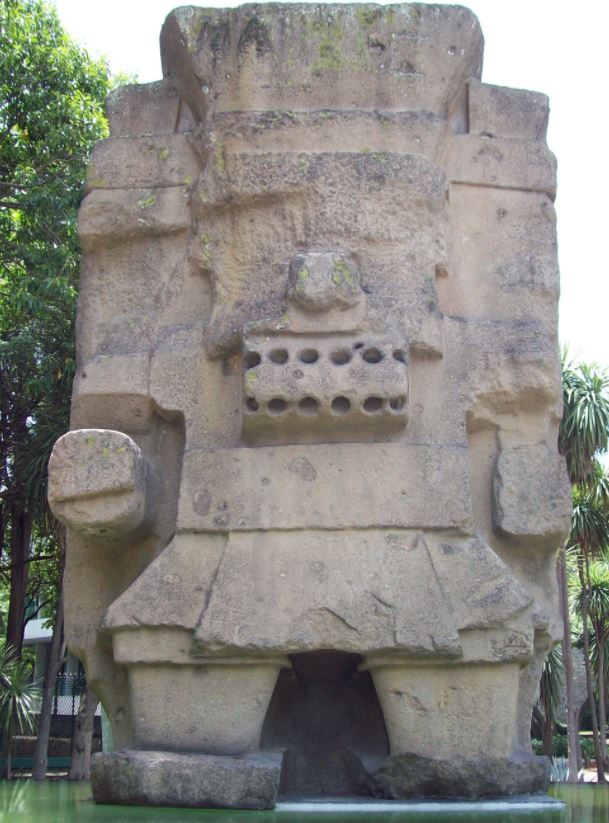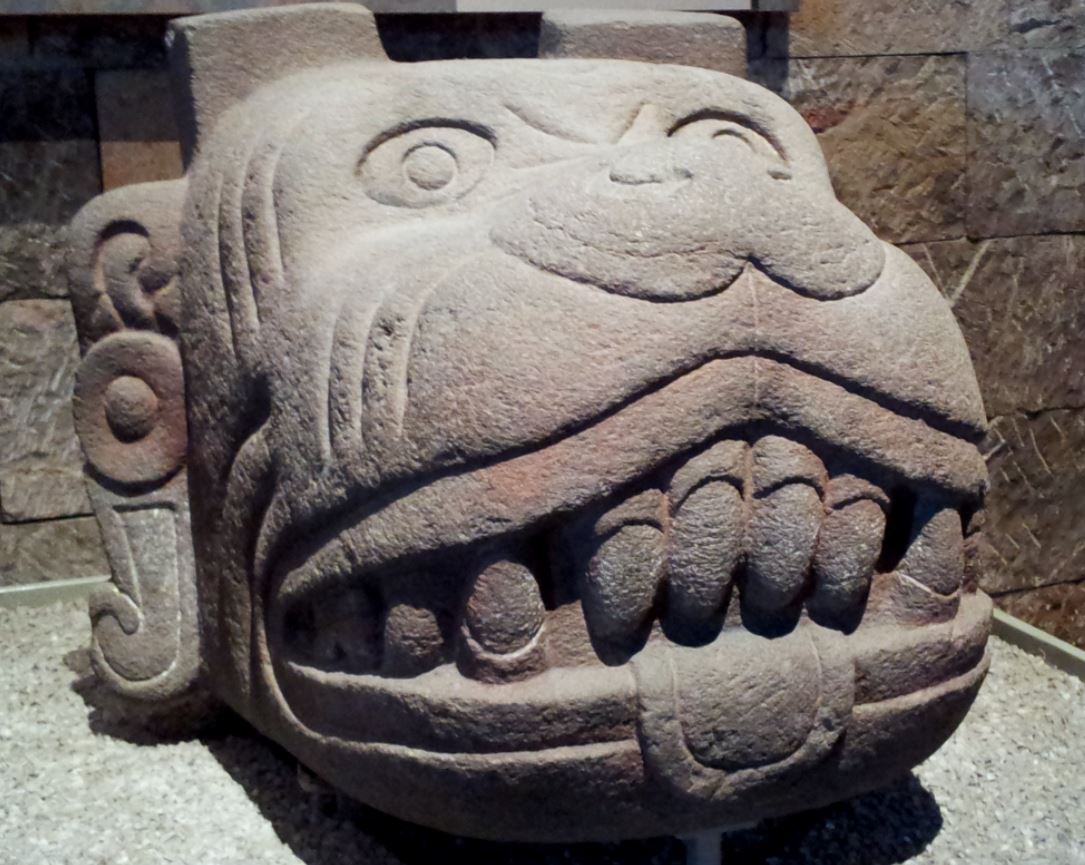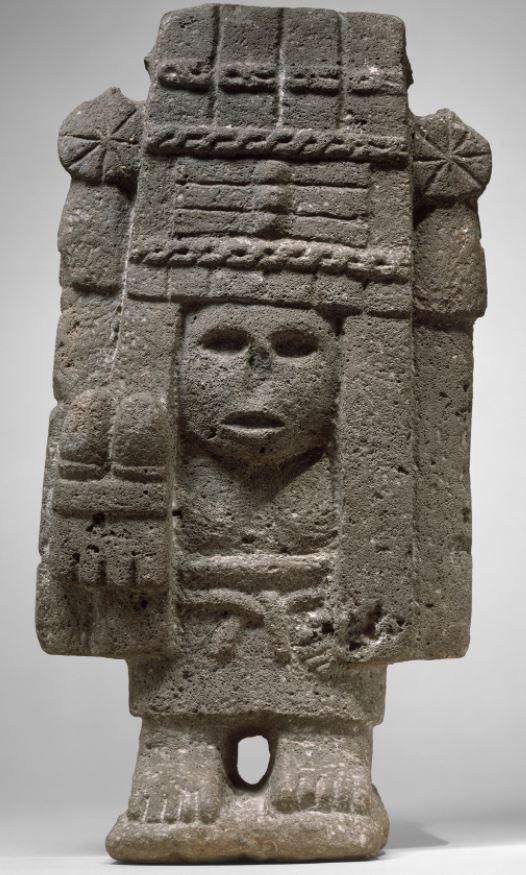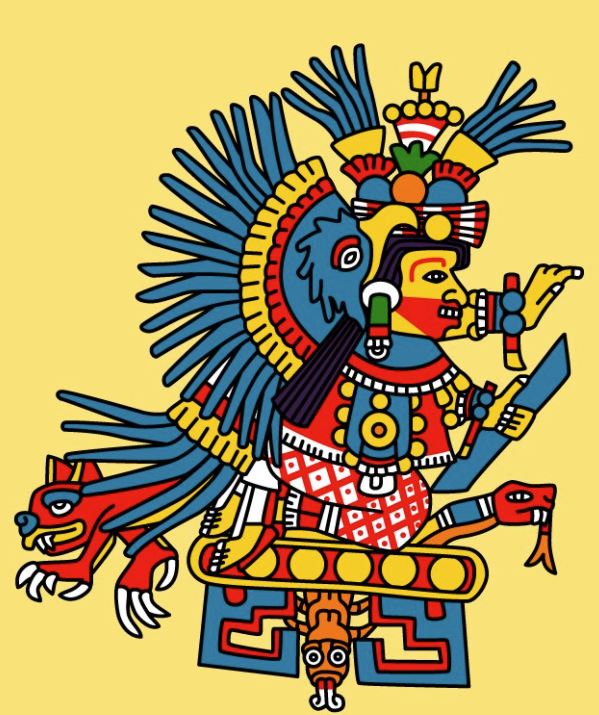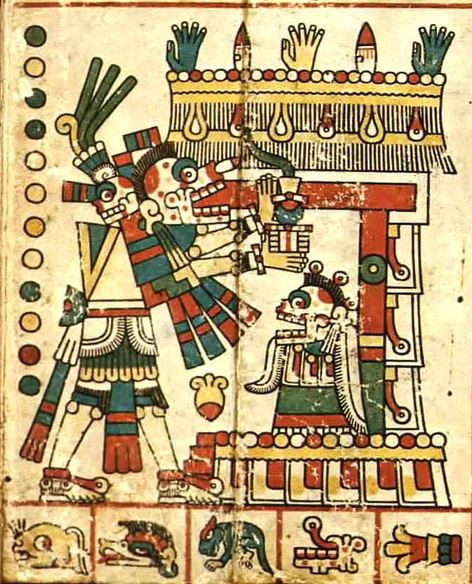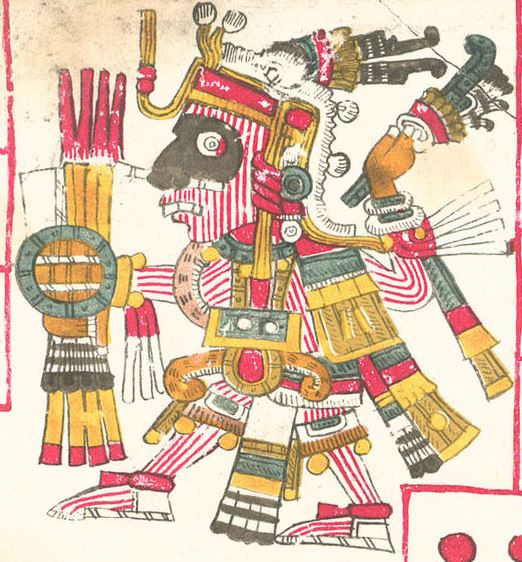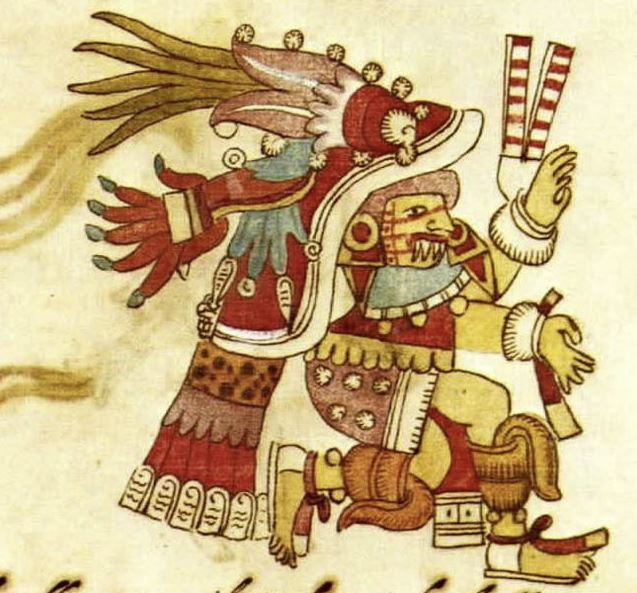The Aztec God Tezcatlipoca, The Jaguar and the Obsidian Mirror
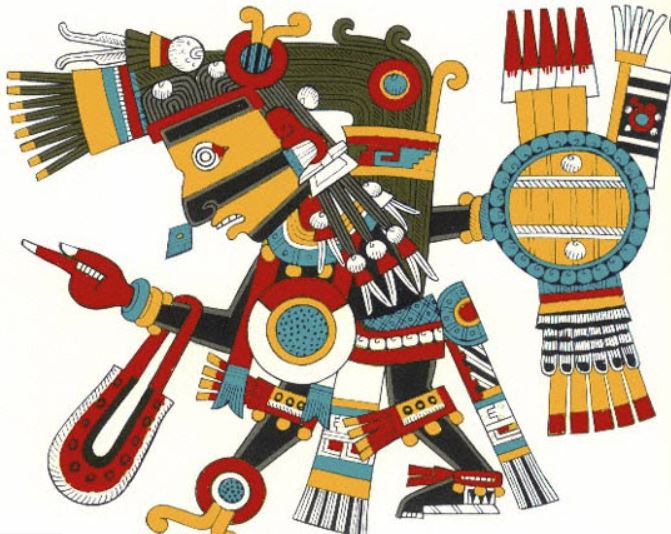
The Aztec god Tezcatlipoca is one of the main deities in the pantheon of the Aztec religion, to the point that he is sometimes considered to be the supreme among the gods.
He would have been one of the sons of the two primordial divinities, Ometecuhtli and Omecihuatl, who were sometimes also seen as a single androgynous entity by the name of Ometeotl.
The Aztec god Tezcatlipoca’s brothers would have been Quetzalcoatl, Xipe-Totec, and Huitzilopochtli, who also were important gods in this Pantheon.
What is Tezcatlipoca the god of?
The Aztec god Tezcatlipoca presided over an incredibly wide range of activities, concepts, and entities comprising the night winds, the night sky, the earth, the cardinal point of the north, war, hostility, divination, sorcery, and beauty.
According to scholars the main characteristic of Tezcatlipoca, the one that joins all his different aspects, is his power to bring change through conflict so. Simplifying, Tezcatlipoca is the Aztec god of change.
This is one of the Tezcatlipoca statue
Tezcatlipoca was linked to obsidian, a glass of great importance among the Mesoamericans since it was used to make mirrors and to perform religious rituals.
Unfortunately, not many representations of the Aztec god Tezcatlipoca survive, probably because of the tendency of Christian priests to destroy them.
In many of the few remaining portraits, the Aztec god Tezcatlipoca is represented without his right leg, a circumstance due to the fact that he was said to have lost this limb during the battle against the Earth Monster, at the time of the creation of the world.
A representation of the Aztec god Tezcatlipoca
Aztec god Tezcatlipoca obsidian mirror and the jaguar
In pictures, his missing limb is replaced by an obsidian mirror, by a snake, or also by a bone, alluding to the Aztec god Tezcatlipoca’s link to the world of the dead. Also, he usually had a black and a yellow stripe on his face. The jaguar was Tezcatlipoca’s sacred animal.
More precisely, it was his nagual, i.e. his animal disguise. This association was not casual, because the maculated skin of the jaguar remembered the night sky, over which the Aztec god Tezcatlipoca was thought to preside.
Tezcatlipoca jaguar, one of the main representations of this Aztec god
What does Tezcatlipoca mean?: Origin of the Name
The name “Tezcatlipoca” means “smoking mirror” in Nahuatl, which was the language of the Aztecs and of other Mesoamerican peoples. This name surely refers to the god association with obsidian.
History of the Aztec god Tezcatlipoca and Most Important Myths Related to Him
One of the reasons because the Aztec god Tezcatlipoca was so important for the Aztecs is the fact that he was considered to be, together with his brother Quetzalcoatl, one of the creators of the world.
According to the cyclic view of history that the Aztecs had, Quetzalcoatl and Tezcatlipoca would have actually destroyed and created the world in turns many times. Let’s see in detail the myth describing the first of these creative processes.
The Creation of the World of Tezcatlipoca and Quetzalcoalt
At the time when the Aztec god Tezcatlipoca and Quetzalcoatl, and their brothers were born the world did not exist yet: there was only water, and it was inhabited by the Earth Monster, a horrible crocodilian creature by the name of Cipactli.
Tezcatlipoca and Quetzalcoatl decided to fight Cipactli to build a more ordinated world. To this purpose, the Aztec god Tezcatlipoca put his right leg into the water, in order to use it as bait to attract Cipactli.
Tezcatlipoca art in which this myth is represented
The Earth Monster actually ate the Aztec god Tezcatlipoca’s leg, and a battle between Cipactli and the two divine brothers began. The latter finally managed to defeat the reptilian being, and subsequently used parts of her earthly body to forge the emerged lands as we know them.
Finally, Tezcatlipoca and Quetzalcoatl created men and instructed them to make offerings and sacrifices in order to maintain Cipactli calm.
Powers of the Aztec god Tezcatlipoca
As one of the Aztec religion’s main deities, Tezcatlipoca was thought to be extremely powerful.
He was deemed capable, by means of magic, of determining the destiny of every being, granting luck and success to those who deserved it, but also sickness and poverty to those who had done evil actions.
This is a picture of the Aztec god Tezcatlipoca created by Mauricio Herrera
Symbols of Tezcatlipoca god and Their Meanings
One of the Aztec god Tezcatlipoca’s main symbols was the mirror, as his very name suggests. Let’s see in detail what could be its meaning.
Tezcatlipoca Smoking Mirror
The obsidian mirror that Tezcatlipoca usually brought upon himself, sometimes in the place of his right leg, sometimes on his chest, symbolized omniscience.
In the Tezcatlipoca obsidian mirror, in fact, he would have been capable of seeing everything happening in the world, comprised all the actions and thoughts of men.
This knowledge would have been fundamental for the Aztec god Tezcatlipoca to dispense prizes and punishments in a rightful manner.
Additional Aztec god Tezcatlipoca Facts
Aztecs have become famous among the general public because of one of their more bloody and violent characteristics: they used to make human sacrifices to honor their deities.
It is not surprising that one of the most elaborate rites having a human sacrifice as its climax was directed to one of their main deities, the Aztec god Tezcatlipoca, considering his position in the Aztec pantheon and his violent nature. This rite was performed during the course of an entire year.
It started by choosing the victim, who usually was a strong and handsome prisoner of war. These characteristics were essential since the victim was required to impersonate the god Tezcatlipoca himself for all the time of the rite.
For this purpose, he was treated as a nobleman, and four beautiful women were given to him as companions. This number was not random, since they were meant to represent the four goddesses Atlatonan, Huixtocihuatl, Xilonen, and Xochiquetzal.
Things were arranged so that the day of the sacrifice would fall in the month of Toxcatl, which was dedicated to Tezcatlipoca. On this day a ceremony was performed, representing the wedding of the victim with the four ladies, and therefore the marriage of Tezcatlipoca to the four goddesses.
After this, the victim would have started to climb the steps of the temple. During his ascent, he would have broken some flutes he had previously played.
This act had a symbolic value since the Aztec god Tezcatlipoca was linked, among other things, to music. Once the chosen victim had reached the top of the temple he would have been sacrificed by removal of his heart, which was to be offered to the real Tezcatlipoca. For this purpose, an obsidian knife would have been used.
This is a representation of the mask of the Aztec god Tezcatlipoca

